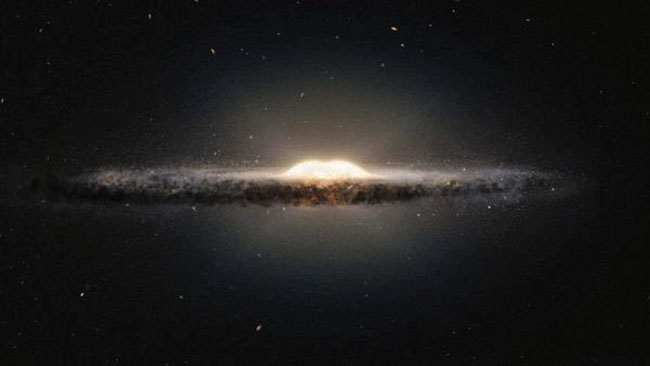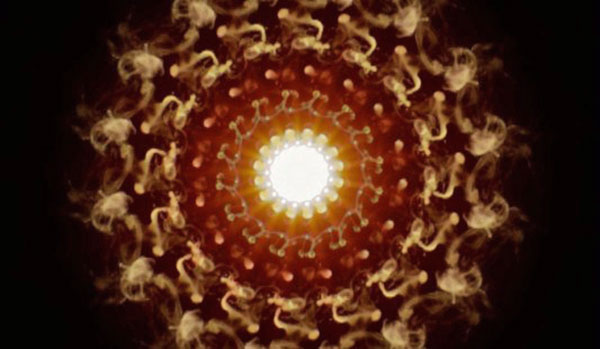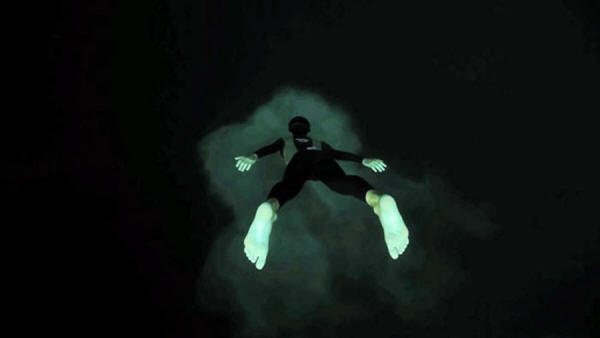|
May 02,
2017
This is a perplexing
thought that has puzzled philosophers and scientists for centuries.
So much so, that it has led to a great divide between that of
western thought and that of eastern thought.
It prescribes to the notion that matter is the fundamental, underling layer of existence in which nothing else is over or above.
It's thought that all
consciousness, emotions, thoughts, feelings, forms, and intentions
can be explained in terms of the physical interactions of matter.
The phrase,
...has become a respected idea on nothingness amongst western thinkers.
Since nothing is nothing at all, in this line of thinking, there has been a real putdown, disinterest, and confusion amongst people for anything that has to do with nothingness, such as,
There is often a stigma
associated with it as unimportant, superficial, and a
sign of weakness in a large majority of the population. It's
professed that it is only the physical that matters and ultimately
it's where all of reality fundamentally exists.
Alan Watts, a renowned philosophical thinker who was known for communicating eastern thought to western audiences, described it by saying,
In this view, the underlying reality is that of both nothingness and somethingness.
They cannot exist on their own as ideas, and therefore are two forces within the one unity of existence.
This is the essence of Taoism, which states that,
It is the yin and the
yang (positive and negative), which make up the unity of Tao.
To understand this, it's easier to visualize it in the form of solid and space.
Try picturing an object without a background space to contrast it to. A solid cannot fundamentally exist unless it is surrounded on the outside by space, because if there were no space between objects, then there would be no way of telling where the objects edges are, and therefore there would be no form.
In a sense, without the so-called nothingness or empty space around it, there would be no distinction between objects.
This lack of separation would blend everything together into a whole, which could be perceived in two ways:
Nothingness and everything are really one in the same, in that in nothing, there is infinite possibility since there is no experience to tie one down, and that in everything, there is infinite possibility since there is infinite awareness of everything.
It is merely the
observers perception of nothing and everything.
They must come into this world together as one since separately they cannot exist on their own. They can only really be understood in human thought by comparison amongst one another.
The contrast between the interconnection of the two is said to be what gives the world meaning and perception.
In eastern thought it is
believed that you cannot have the ups without the downs,
so in that respect, the journey of life is perceived to be that of a
wave moving up and down through the positive and negative on an
infinite continuum.
It is thought that the negative allows for the restoration of energy through connection to the infinite. It's this aspect of the negative, the trough of the wave, which is said to give rise to the positive aspect, the crest of the wave.
This seems apparent when one thinks of sleep, for actions in the reality that humans experience are not possible unless one drifts away into nothingness in between.
Sleep seems to be nothing
more than the absence of action, as to allow for the building up of
kinetic energy that can be used upon waking.
The negative is also embraced, in that one cannot expand his or her consciousness without delving into the realm of the unknown with an open mind.
To one's own subjective consciousness, going into new experience is like going into nothingness, since the experience has not yet happened, and therefore there is no neural connection in the brain that exists for that experience.
An open mind is key to the definition as well because an open mind stems from the negative force of nothingness; meaning the mind is not tied down by preconceived perceptions of reality and faulty thinking of already knowing it all.
Instead, the mind is blank and open to new and all possibility, which allows for the energy to be taken in and learned from.
It is said in Taoism that one does not will their way through life, but instead, it is a journey of ups and downs to be experienced naturally and openly. Inaction allows for creativity to appear, which then gives rise to natural action.
This is said to be the
most authentic way to live and the fundamental philosophy
behind much of eastern thought.
Since western thought is predominately concerned with the physical, it is primarily focused on reactive approaches to the occurrence of physical experience.
For this reason, American medicine is largely designed around curing immediate incidents of physical experience by using other physical means. Once the surface symptoms go away, that's usually the end of it.
It's a more short-term approach and immediate fix...
In contrast, traditional eastern science is under the assumption that life operates in the medium of both physical and nothingness, and therefore it is concerned more with maintaining wellness and equilibrium in the long-term.
In this thinking, eastern medicine is usually based upon more holistic and preventive approaches in order to release pent-up energy daily that inherently builds up over time if the force of nothingness is ignored.
This approach is said to
maintain balance and health throughout one's life through embracing
both action and release, not action and action.
What's important about this theory is that it showed that there was no fundamental difference between matter and energy.
Matter was originally thought to be the measure of rest mass, that is its physical weight or volume in a vacuum. However, Einstein's theory proved, that just because an object is stationary and has zero rest mass (what we think of as nothing with no physical volume) doesn't mean it has no matter.
It showed that massless objects could possess some internal and intrinsic energetic matter, and therefore matter was not just physical mass, but could also consist of some form of massless energy.
It determined that physical mass could be converted into massless radiation (energy), and massless radiation (energy) could be converted into physical mass. It became apparent that physical mass wasn't the only form of gravitational energy, but massless energy can also exert a gravitational force.
Essentially, all energy,
mass or massless, could affect space and time and warp it.
However, it plays right into the laws of conservation of energy, which states that energy cannot be created or destroyed.
Instead, it seems apparent that energy is merely converted into different forms, all of which are not always seen in terms of the physical. For instance, a uranium atom could decay and break apart into two separate atoms, thorium and helium.
During the process, while
the physical atomic mass of uranium could be converted
proportionately into thorium and helium, extra energy was also
released in the process, proving that it was not just mass, which
constituted mater, but also massless energy such as radiation.
It furthered this claim by showing that light (massless energy), has what is referred to as a wave-particle duality, in that light can act as a wave or a particle, all depending upon the measurement/observation made.
Not only could waves act as particles, but particles could act as waves. A popular experiment in which has proved this numerous times is the Double Slit experiment.
Below is a
video to help better understand the concept.
It seemed from the experiment that the particles would take the form of a wave or particle depending upon the observed property of waves, otherwise known as the observer/subjective consciousness.
This observed property of waves is often described as probability waves/potentiality.
It seemed to back up Einstein's claim that massless energy can affect space and time and exact a gravitational force.
The observation appeared to have exerted a massless force on the particle, affecting the possibility of the particle's form by increasing the probability that the wave becomes a particle in actuality.
The Uncertainty Principle in Quantum Mechanics seems to consolidate this claim, by establishing that particles of matter cannot have definite positions and momentum at the same time.
This conclusion is groundbreaking in that it shows that fixed objects do not seem to move through space as mass, and instead seem to travel as massless waves, represented by fields of probability, that only appear as particles if they are observed.
Quantum Fluctuation went even farther by showing that in spacetime, particles can pop in and out of existence in a period so fast that it cannot be measured. It appears that matter can actually de-materialize as well as materialize out of nothing.
For the first time it
hinted that maybe empty space was not actually empty at all, but
instead was an untapped field of massless fertile particles waiting
to be activated through observation.
According to Sean Carroll:
So if everything is
fields and there is an underlying
field beneath it all, what is this
field?
It is essentially what the word when broken down means, no-thing-ness, so therefore it is of complete purity.
Now this doesn't mean nothing in the sense of what people perceive as nothing, because visualizing nothing is still visualizing something.
Nothingness cannot be comprehended or explained in any way by human thought and language. It can only be attempted to be articulated by use of comparison. It is truly infinite...
Similar to the Double Slit Experiment, it is the observer that determines the way this nothingness is understood. Since there is no way to describe nothing, it can be perceived in two ways: as nothing at all or everything all in one as infinite possibility. They are both wholes.
According to both Quantum Physics and Taoism, it is here within nothingness, an indescribable reality, in which all life and somethingness operates. It is the medium for which all material life stems from.
For this reason, it is only the observation and measurement of human consciousness for which is determining reality.
Time, space and possibility are infinitely fertile in nothingness, and therefore nothingness should not be feared in the negative sense, but embraced in the positive sense of the word.
As Alan Watts stated,
If one believes in the concepts of Quantum physics and Taoist philosophy, then all physical form, everythingness, is ultimately derived and dependent upon the great void of nothingness.
Since nothingness is infinite, it appears the physical world is truly what you make it. The only rule is Tao, the embrace of the negative to fuel the positive to form the middle way.
They don't exist separately, and therefore are one.
From here, it is then up to us, the observer, the something, the whole existence of the physical, the entirety of consciousness, to decide what reality we want to create and embody consciously within the infinite nothingness.
Consciousness determines matter, and the possibility is unbounded.
In this regard, one should never be afraid of nothing, for nothing does not have to be negative in the sense of empty, but full in the sense of unlimited potentiality.
Everythingness lies within nothingness. One will never find that something they're looking for until one delves into the great void of nothingness and unknown.
This is where growth and life comes from...
It seems the appearance of solidity, definitiveness, separateness, and rigidness in the physical world, is merely just a holographic illusion of our own rigid conscious beliefs and observations.
Behind the fašade lies the truth that all life is one and that life appears to be nothing more than the process of unlimited creativity with itself, of infinite potential and possibility.
So what are you waiting
for, be who you want to be and connect back with yourself,
nothingness isn't going to stop you...
that gets you into trouble; it's what you know for sure that just isn't so. StormCloudsGathering
|




